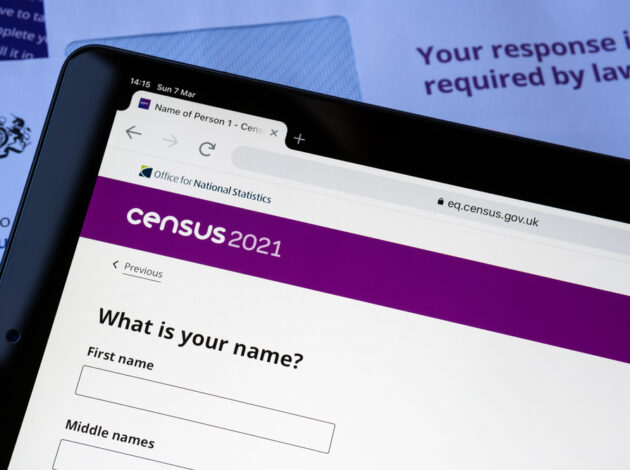Census 2021 gender identity estimates: progress and next steps

One of our key roles as statisticians is to paint a picture of society according to how people describe themselves. Our responsibility is to keep pace with how society defines itself and to make our statistics available as promptly as possible. Data from Census 2021 are so rich and complex that the publication of the first results is far from the end of our work. Sometimes we can unearth unexpected patterns as we undertake further analysis and gather feedback from users about their findings. Emma Rourke explains what we know about census gender identity data so far.
At the Office for National Statistics, we strive to work in innovative ways to address new user needs, remaining impartial as part of our mission to deliver statistics that inform decision makers about the population.
In the England and Wales Census 2021, a new, voluntary question on gender identity was introduced for people aged 16 and over, because we were satisfied a clear user need had emerged. It is especially challenging to design a question when it involves a concept that may not be familiar to all. We go through a rigorous and thoughtful process, drawing on our expertise in question design, to help achieve the best results possible, setting out our findings transparently. In 2017, we began testing versions of a question, involving trans people and the wider population who did not identify as trans. Through the census rehearsal in 2019, people who did not have English as their main language responded to the question, alongside all those on the questionnaire, before it was finalised through legislation in 2020.
We made the first results available to all at the earliest opportunity in January this year, with accompanying quality information, and then, in April, we published a range of tables to allow users to investigate how the gender identity data related to other census characteristics. The publications received considerable interest, including questions about the data.
Where are we trying to get to?
As with all our census releases, a normal part of our ongoing statistical production is to undertake detailed analysis to understand the data. With new topics, this can be especially revealing as the data have never been collected to such a scale before. It is only through the opportunity of examining the larger set of census results that it is possible to identify and explore unexpected patterns.
At the same time, users of our data will pose questions to us, and, in the case of gender identity, we have been tackling the complex task of examining how people responded to the question and whether it did not work well for some. For example, users asked us whether the question might have been misunderstood by people who do not have high levels of English proficiency? Or was the question misunderstood because it is an unfamiliar concept to some?
In April, we announced further research to understand these questions and the Office for Statistics Regulation (OSR) confirmed they would also conduct a review. In June we published the first tranche of our research which thoroughly reviewed how the census data had been processed and coded. This allowed us to conclude the information we have published accurately reflects what people told us on their questionnaires.
The next stage of our work involved multiple questions which we have been approaching in several different ways to be as thorough as possible. We have been talking to a wide range of users about their needs, as well as international colleagues about best practice. In this ongoing work, we also cannot ignore the probability that some trans people were among those who chose not to respond to the voluntary question.
Ultimately, we will provide a package of information that will assist the practical interpretation of the data. This in-depth work has taken longer than we had first intended but we believe it should not be rushed. Our work so far has confirmed just how complex a task it is and getting this right is our main priority.
OSR review findings and recommendations
Our next steps, as recommended in today’s OSR interim report, are to set out our plans detailing what we are exploring, what it might show and when the results of our research will be published. We will set out this plan within the next four weeks.
We strongly welcome the support from the OSR in finding that the work we have been undertaking should be regarded as a routine part of ongoing statistical production for a new area of data collection, and that users should be confident in the overall robustness of census data.
The OSR review acknowledges there is always good reason to expect uncertainty, especially when you are trying to estimate a small population amongst a large one and there are scant alternative data sources to corroborate against. Indeed, discussions we have been having with users echo the OSR findings of an expected significant degree of uncertainty around estimates of the trans population, given that this is the first time the question has been asked and that the concept of gender identity may be unfamiliar to many people.
As our regulator notes, our teams remain committed to providing public value with our innovative work as we seek to better understand the quality of the data and how this can best be communicated to users.
Next steps
While there are lessons to be learnt, we will continue to provide our research at the earliest opportunity and in line with the Code of Practice for Statistics. We know that clearer information on quality and uncertainty in relation to granular breakdowns of gender identity will be helpful to users and our next publication will aim to provide this guidance.
From the outset, we recognised that this was a new area and that the gender identity question was the first of its kind and would likely need to be updated in time. Like the ethnic group question introduced to the census in 1991, new topic areas require iterations. As part of our work developing harmonised standards for survey questions, we will explore ways to ensure the approach is the most relevant and helpful to users.
We are also considering the role of administrative data to understand population groups and are seeking feedback from users through our consultation on the future of population and migration statistics in England and Wales.

Emma Rourke is deputy national statistician